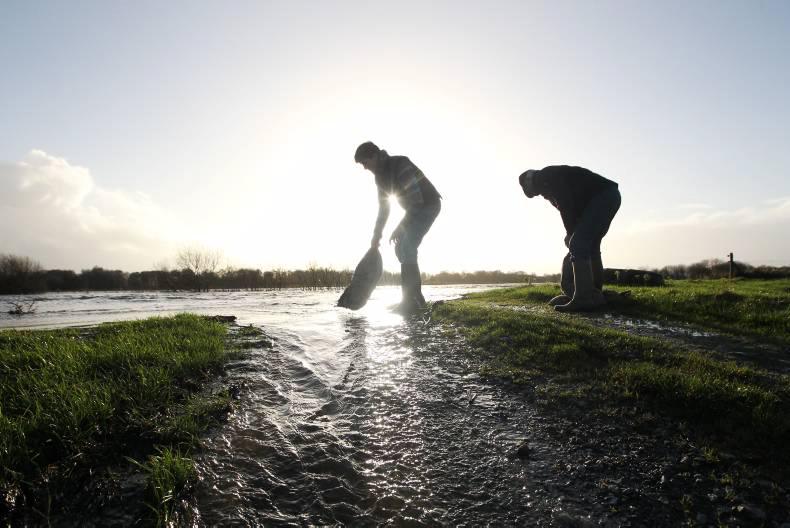Charlie Kileen is a drystock farmer from Meelick, Co Galway. His farm is situated behind a man-made bank that was constructed in 1932 and is maintained by the ESB.
While not affected yet, farmers in the area are worried about water levels in the Shannon. If the bank is breached, 10,000 acres of farmland will be flooded, most of which are a Special Area of Conservation (SAC).
“I have already moved 400 sheep from the flood plain,” said Kileen. “We are better prepared for it this time because we got a warning about it. Animals are usually gone from there anyway in the winter, but the flooding in 2009 caught us by surprise.”
Further upriver, in places such as Banagher, Co Offaly, farmyards are already overflowing. The question is whether or not this will have an impact on fodder supplies.
“There should be no shortage of fodder this time unless we have an extremely bad spring,” said Kileen. “There was a good silage crop around the country this year and, as far as I am aware, this should help to balance the fodder supplies.”
The ESB are also responsible for maintaining water levels in the Shannon and warning the public of expected flooding. While Wednesday 9 December was the critical day for rainfall, water levels did not change dramatically.
“We were told that Wednesday was critical but it seems to be OK. However, water levels in the Shannon may not recede so all we can do is wait and see what happens,” said Kileen.
“The Ardnacrusha reservoir was built to prevent summer flooding. A pump system runs from Meelick to Portumna and is around 12 miles long. The ESB conduct a pump drench every year as there is a statutory level of water that must be maintained under the Shannon Act 1928.”
Read more
Storm Desmond causes widespread flooding
€15m emergency flood fund to provide little relief to farmers
Flooding case study: Paddy Towey, Banagher, Co Offaly
Legal query: Duty on landowner to clean out drains
Charlie Kileen is a drystock farmer from Meelick, Co Galway. His farm is situated behind a man-made bank that was constructed in 1932 and is maintained by the ESB.
While not affected yet, farmers in the area are worried about water levels in the Shannon. If the bank is breached, 10,000 acres of farmland will be flooded, most of which are a Special Area of Conservation (SAC).
“I have already moved 400 sheep from the flood plain,” said Kileen. “We are better prepared for it this time because we got a warning about it. Animals are usually gone from there anyway in the winter, but the flooding in 2009 caught us by surprise.”
Further upriver, in places such as Banagher, Co Offaly, farmyards are already overflowing. The question is whether or not this will have an impact on fodder supplies.
“There should be no shortage of fodder this time unless we have an extremely bad spring,” said Kileen. “There was a good silage crop around the country this year and, as far as I am aware, this should help to balance the fodder supplies.”
The ESB are also responsible for maintaining water levels in the Shannon and warning the public of expected flooding. While Wednesday 9 December was the critical day for rainfall, water levels did not change dramatically.
“We were told that Wednesday was critical but it seems to be OK. However, water levels in the Shannon may not recede so all we can do is wait and see what happens,” said Kileen.
“The Ardnacrusha reservoir was built to prevent summer flooding. A pump system runs from Meelick to Portumna and is around 12 miles long. The ESB conduct a pump drench every year as there is a statutory level of water that must be maintained under the Shannon Act 1928.”
Read more
Storm Desmond causes widespread flooding
€15m emergency flood fund to provide little relief to farmers
Flooding case study: Paddy Towey, Banagher, Co Offaly
Legal query: Duty on landowner to clean out drains






 This is a subscriber-only article
This is a subscriber-only article










SHARING OPTIONS: